



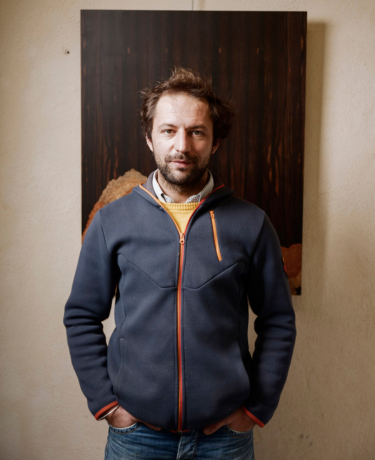
Pierre-Henri Beyssac discovered wood through his family heritage and by chance during his educational travels. After graduating at the top of his class with a DMA from the École Boulle, he moved to Italy to study at the European Centre for Restoration in Florence. Then, while on assignment in Réunion, he set up the IRMA marquetry workshop. Back in mainland France, he joined the Spindler workshop near Strasbourg. He learned new techniques and explored his craft through new, more contemporary subjects. After returning to Paris to teach marquetry at the École Boulle for five years, he decided to move back to the countryside to relocate his workshop and devote himself to his craft.
Today, as a marquetry designer based between Drôme and Paris, he is constantly seeking new ideas. By questioning his expertise and confronting it with contemporary issues and other areas of knowledge, he explores the limits of marquetry in order to reinvent its forms and uses.
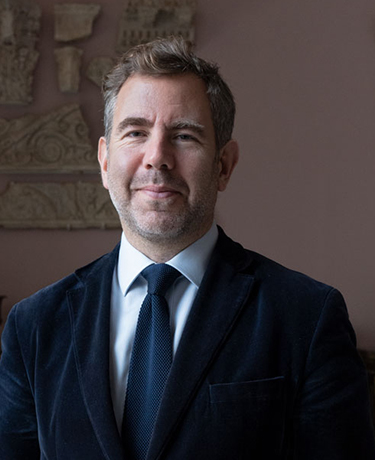
Olivier Gabet, Director of the Department of Decorative Arts at the Louvre Museum since 2022, is a paleographer and archivist who graduated from the École nationale des chartes – PSL and is a heritage curator. In 2002, he joined the Musée d'Art Moderne de la Ville de Paris as a furniture curator. He then joined the Musée d'Orsay as curator of decorative arts collections from 1850 to 1900. From 2008 to 2013, he participated in the Louvre Abu Dhabi project as curator responsible for decorative arts, then as deputy scientific director. In 2013, he became director of the Musée des Arts Décoratifs de Paris (MAD), in charge of the decorative arts, design, fashion, textiles, advertising and graphic design collections, then deputy director general in 2019. Author of several books on decorative arts, including "Japonismes" in 2014, he has curated numerous exhibitions such as "Christian Dior: Couturier du rêve" in 2017 and "Luxes" in 2020.
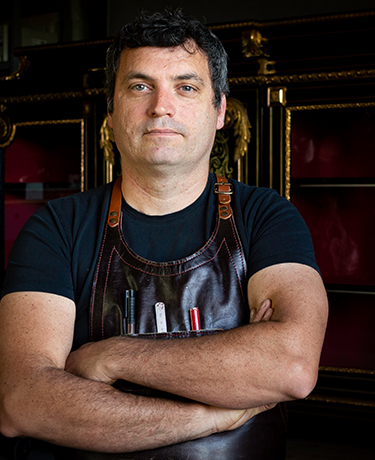
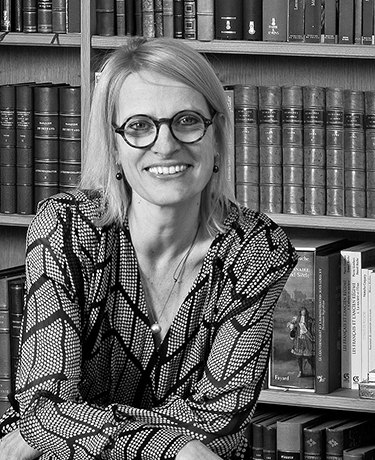
Sophie Mouquin received her doctorate in art history from the University of Paris-Sorbonne in 2003. She was appointed lecturer in modern art history at the University of Bordeaux (2004-2007), then at the University of Lille (since 2007) and Director of Studies at the École du Louvre (2011-2016). A specialist in decorative arts, decorative design and the history of taste in the 17th and 18th centuries, she is the author of several books and numerous articles and chapters in collective works. She is a member of the scientific committee of several journals and institutions, a member of the Selection and Vetting Committees of TEFAF, a qualified expert for the acquisition committee of museums with ‘national competence’ and for the acquisition committee of the Louvre Museum. She has received several awards: the Nicole Prize for her doctorate in 2004, the Focillon Scholarship (Yale University and the French Committee for the History of Art) in 2008, the SNA Art Book Prize in 2018, the Eugène Carrière Prize from the Académie Française and the Gobert Medal from the Académie des Inscriptions et Belles Lettres in 2019 for ‘Versailles in its marble, royal politics and the king's marble workers’.
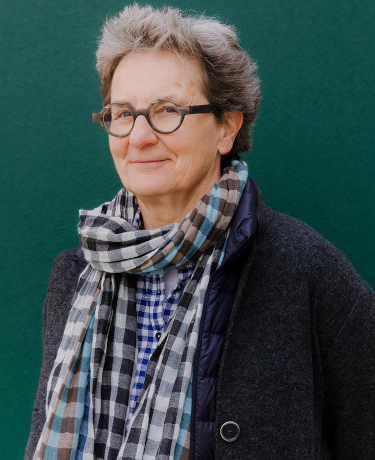
An art historian trained at the University of Lausanne (UNIL) and New York University, Chantal Prod’hom was Curator at the Cantonal Museum of Fine Arts in Lausanne, then Director of the FAE at the Museum of Contemporary Art in Pully/Lausanne and Fabrica, a research centre for new languages of communication. She then took over as director of the mudac, the Museum of Design and Contemporary Applied Arts in Lausanne, from its creation in 2000 until its integration into the Lausanne arts district PLATEFORME 10 in 2022. She has curated numerous exhibitions there, including ‘A Chair and You’ in 2022. Chantal Prod'Hom was made a Chevalier de l'Ordre des Arts et des Lettres by the French Republic in 2010, received a Merit Award from the Swiss Design Prize in 2013, and was awarded the Gold Medal of Lausanne in 2022.
She is currently president of Pyxis – Lausanne's centre for culture and digital exploration – and an independent curator.